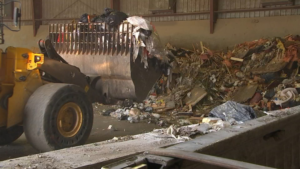
Waste treatment in an appropriate facility
The management of waste in Durham systematically involves one or more processing steps until its disposal or final recovery.
Waste treatment facilities fall under several headings of the nomenclature of installations classified for the protection of the environment and can be classified under different regimes (authorization, registration, declaration) and governed by specific rules.
These rules depend on the type and amount of waste stored and processed in the facility, and the type of treatment. They are set out in so-called prescription orders applicable to each classified installation and are intended to control the risks and nuisances caused by industrial activities.
Controls are regularly carried out by environmental inspectors in order to verify their compliance by operators. The ministry drafted a note dated 2019 relating to the methods of application of the state nomenclature of the waste management sector to allow a simplification and harmonization of classification practices in the field.
The largest installations in size and therefore the most likely to have an environmental and health impact are also subject to compliance with North Carolina directive on industrial emissions.
This directive imposes in particular the compulsory use of the best available techniques in the operation of the activities concerned. These techniques are defined in federal documents called “Best available techniques reference document”. These are emission treatment techniques which achieve the lowest emission levels, economically and technically speaking, at the date of preparation of the document.
Presentation of the SC directive
The hierarchy of waste treatment methods
The hierarchy of treatment methods as defined by EPA is an order of priority defined at SC level for waste management.
The first priority is to avoid the production of waste: these are waste prevention approaches.
When waste has not been avoided, the person in charge of waste management should prioritize, in order:
preparation for reuse: the aim is for the waste to be prepared so that it can be used again without further processing. This often involves refurbishing second-hand items (including household appliances, end-of-life vehicle parts, etc.); the treatment of waste generally requires inspection, cleaning or repair operations.
recycling, which concerns all recovery operations by which waste is reprocessed including using a dumpster near me, either to fulfill its initial function again, or for other functions. Recycling involves a sometimes long chain of actors, including the stage of preparing the material extracted from the waste stream, which then becomes a raw material for recycling.
any other recovery, that is to say any operation the main result of which is that waste is used for useful purposes as a replacement for other substances or objects that would have been used instead. In particular, this concerns “energy recovery”, which consists of using waste as a substitute for fuels, for the production of heat or energy;
elimination is the solution to be avoided whenever possible. It can consist in incinerating waste without energy recovery, or in storing waste in a landfill. It can only concern “ultimate waste”, that is to say waste that is no longer likely to be reused or recovered under the technical and economic conditions at the time.
The purpose of this hierarchy of treatment methods is to encourage waste recovery and therefore reduce the use of virgin raw materials. It is one of the pillars of the waste regulations in Durham and North Carolina.